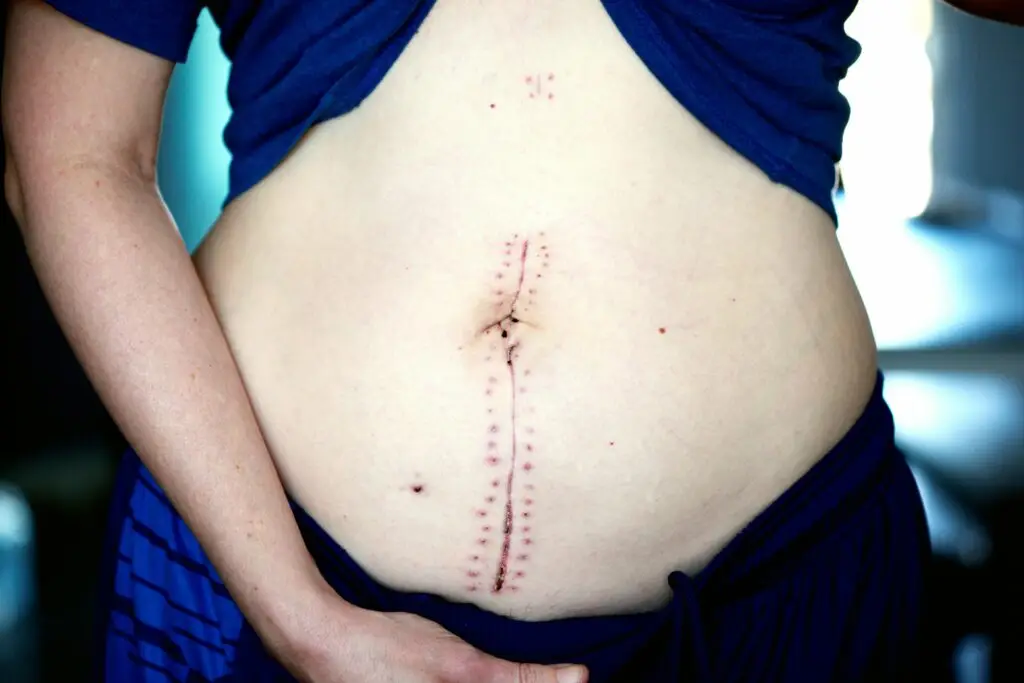Thyroid and Parathyroid Signs
- Marie’s sign: A fine hand tremor can be a sign of hyperthyroidism.
- Maroni sign: Redness over the thyroid area may also suggest hyperthyroidism.
- Pemberton’s sign: Facial congestion and vein distension when raising arms may indicate a retrosternal goiter.
- Berry’s sign: Absence of carotid pulse may indicate malignant thyromegaly.
- Dalrymple’s sign: Upper sclera is visible due to retraction of upper eyelid in primary thyrotoxicosis.
- Joffroy’s sign: Absence of wrinkling of the forehead when the patient looks upwards with the face inclined downwards in primary thyrotoxicosis.
- Von Graefe’s sign: The upper eyelid lags behind the eyeball as the patient is asked to look downwards in primary thyrotoxicosis.
- Boston sign: Jerking of the lagging lid in primary thyrotoxicosis.
- Griffith’s sign: Lag of the lower lids during elevation of the globe in primary thyrotoxicosis.
- Stellwag’s sign: Staring look and infrequent blinking of eyes with widening of palpebral fissure in primary thyrotoxicosis.
- Moebius sign: Inability or failure to converge the eyeballs in primary thyrotoxicosis.
- Riesman’s sign: Bruit over the closed eyes in primary thyrotoxicosis.
- Rosenbach’s sign: Tremor of the closed eyelids in primary thyrotoxicosis.
- Archibald’s sign: Shortened fourth and fifth digits can be a sign of pseudohypoparathyroidism.
- Chvostek’s sign: Facial twitching when tapping over the facial nerve can indicate low calcium levels.
- Trousseau’s sign: Hand spasms following inflation of a blood pressure cuff can indicate low calcium levels.
Vascular Signs
- Homan’s sign: Calf pain with foot flexion can suggest DVT.
- Mose’s or Bancroft’s sign: Calf tenderness on squeezing can suggest DVT.
- Lisker’s sign: Tibial tenderness can suggest DVT.
- Louvel’s sign: Venous pain induced by coughing can suggest DVT.
- Lowenberg’s sign: Assymetry in calf pressure tolerance can suggest DVT.
- Pratt’s sign: Dilated veins over the tibia can suggest DVT.
- Ramirez sign: Pain from an inflated cuff above the knee can suggest DVT.
- Crueveilhier’s sign (saphena varix): A cough impulse felt at the saphenofemoral junction while standing may indicate varicose veins.
- Buerger’s sign: A change in foot color with elevation may indicate peripheral artery disease.
- Adson’s sign: Decreased pulse with certain neck movements can indicate thoracic outlet syndrome.
- Henle-Coenen sign: Distal vessel pulsation after fistula occlusion indicates safe ligation.
- Branham’s sign: Slowing of heart rate with fistula compression can indicate an arteriovenous fistula.
Abdominal Signs
- Pointing sign: Patient precisely localizes the pain, which can suggest appendicitis.
- Rovsing’s sign: Right lower quadrant pain with left-sided pressure can suggest appendicitis.
- Dunphy’s sign: Increased pain with coughing can suggest appendicitis.
- Aaron sign: Pain in the epigastrium or chest with pressure on McBurney’s point can suggest appendicitis.
- Ten Horn sign: Pain with gentle traction of the right testicle can suggest appendicitis.
- Cope’s psoas sign: Pelvic pain upon extension of the right thigh can suggest retrocecal appendicitis.
- Cope’s obturator sign: Pelvic pain upon internal rotation of the right thigh can suggest pelvic appendicitis.
- Bassler sign: Sharp pain when compressing the appendix can suggest chronic appendicitis.
- Adler sign: Medial shift of tenderness upon left lateral repositioning can indicate gynecologic origin of pain.
- Guarding: Voluntary contraction of abdominal muscles can indicate peritoneal irritation.
- Rigidity: Involuntary contraction of abdominal muscles can indicate peritoneal irritation.
- Blumberg’s sign: Rebound tenderness can indicate peritoneal irritation.
- Tanyol’s sign: Umbilical displacement can indicate pelvic or abdominal swelling.
- Beevor’s sign: Upward movement of the umbilicus during abdominal contraction can indicate specific nerve lesions.
- Murphy’s sign: Pain with deep breathing during right upper quadrant palpation can suggest acute cholecystitis.
- Boa’s sign: Skin hyperaesthesia over the posterior right ribs can indicate acute cholecystitis.
- Ranshoff sign: Yellowing of the umbilical area can indicate a ruptured common bile duct.
- Kenaway’s sign: Specific venous hums can indicate portal hypertension.
- Guy-Mallet sign: Tenderness upon left subcostal palpation can indicate pancreatitis.
- Sentinel-loop sign: Dilated jejunal loop on X-ray can indicate pancreatitis.
- Colon cut-off sign: Isolated distention of the transverse colon on X-ray can indicate pancreatitis.
- “Renal halo” sign: Edematous fluid around the kidney on X-ray can indicate pancreatitis.
- Fox’s sign: Bruising over the inguinal ligament can indicate hemorrhagic pancreatitis.
- Reversed ‘3’ sign: Widening of the duodenal loop on barium meal can indicate pancreatic cancer.
- Courvoisier’s sign: A palpable, non-tender gallbladder in a jaundiced patient can indicate pancreatic cancer.
- Bird’s beak sign (Barium swallow): Tapering of the distal esophagus on barium swallow can indicate achalasia.
- Rat tail sign (Barium swallow): Long stenotic segment on barium swallow can indicate esophageal carcinoma.
- Kalokerino’s sign: Filling defect of the stomach fundus can indicate cardio-esophageal herniation.
- String sign: Elongated pyloric channel on X-ray can indicate pyloric stenosis.
- Shoulder sign: Bulge of pyloric muscle on X-ray can indicate pyloric stenosis.
- Double tract sign: Parallel streaks of barium in the narrow channel can indicate pyloric stenosis.
- Cushion sign: Endoscopic finding of a cushioned mass can indicate gastric lipoma.
- Troisier’s sign: Enlarged left supraclavicular lymph node can indicate gastric cancer.
- Trousseau’s sign (gastric cancer): Migratory thrombophlebitis can indicate gastric cancer.
- Double bubble sign: Air in stomach and duodenum on X-ray can indicate malrotation or duodenal atresia.
- Coffee bean sign: X-ray finding indicating sigmoid volvulus.
- Dance’s sign: Right upper quadrant mass due to absence of bowel in the right lower quadrant can indicate intussusception.
- Target sign (AXR): Two concentric circles of fat density on X-ray can indicate intussusception.
- Target or donut sign (USG): Single hypoechoic ring with hyperechoic center on ultrasound can indicate intussusception.
- Pseudokidney sign (USG): Superimposed hypoechoic and hyperechoic layers on ultrasound can indicate intussusception.
- Kantor’s String sign: Thread-like terminal ileum on barium enema can indicate Crohn’s disease.
- Lead pipe appearance: Loss of haustrations on barium enema can indicate ulcerative colitis.
- Klein’s sign: Right iliac fossa pain that moves to the left can indicate Meckel’s diverticulum.
- Howship-Romberg sign: Pain in the inner knee can indicate strangulated obturator hernia.
- Hannington-Kiff sign: Loss of adductor reflex can indicate strangulated obturator hernia.
Groin and Other Signs
- Prehn’s sign: Relief of pain by elevating the testicle can indicate epididymo-orchitis.
- Vermooten’s sign: Doughy or absent prostate on rectal exam can indicate urethral rupture.
- Blue-dot sign: Torsion of testicular appendages.
- Silk glove sign: Indirect hernia sac in a pediatric patient.
- Stemmer sign: Inability to pinch skin on the toe can indicate lymphedema.
- Hutchinson’s sign: Pigment in the nail area can indicate melanoma.
- Kelly’s sign: Visible peristalsis of the ureter during surgery.
- Drooping lily sign: Inferior displacement of calyces on intravenous pyelography can indicate neuroblastoma.
- Boomerang sign: Temporal tips of lateral ventricles on imaging can indicate hydrocephalus.
- Blueberry muffin sign: Subcutaneous blue nodules in neuroblastoma.
- Macewen’s sign: Cracked pot sound on head tapping can indicate hydrocephalus.
- Froment’s sign: Weakness of thumb adduction can indicate ulnar nerve palsy.
- Kanavel’s sign: Tenderness in the ulnar palmar crease can indicate infected ulnar bursa.
- Tinel’s sign: Finger paraesthesia with median nerve percussion can indicate carpal tunnel syndrome.
- Von Rosen’s sign: Click when flexing and adducting the hip can indicate congenital hip dislocation.
- Hamman’s sign: Subcutaneous emphysema over the neck and chest can indicate pneumomediastinum.
- Carnett’s sign: Loss of abdominal tenderness when contracting muscles can indicate intra-abdominal pain.
- Chandelier sign: Severe pelvic pain with cervical movement can indicate pelvic inflammatory disease.
- Fothergill’s sign: Abdominal wall mass that doesn’t cross midline can indicate rectus sheath hematoma.
Trauma Indcators:
- Raccoon/Panda sign: Periorbital discoloration (around the eyes) may suggest a basilar skull fracture.
- Battle’s sign: Bruising behind the ear, over the mastoid process, also points to potential skull base damage.
- Seat-belt sign: Abrasions or bruising mirroring a seat belt’s path across the abdomen can indicate internal organ damage.
- Cullen’s sign: Periumbilical bruising suggests bleeding within the abdominal cavity. (Also acute pancreatitis)
- Grey–Turner’s sign: Flank bruising may signal bleeding behind the abdominal lining. (Also acute pancreatitis)
- Kehr’s sign: Left shoulder pain, especially when lying down or with upper abdominal pressure, can be a sign of splenic rupture.
- Danforth’s sign: Shoulder pain upon inhalation may indicate hemoperitoneum.
- Balance’s sign: Specific flank dullness with shifting dullness can point to splenic rupture with internal bleeding.
- Coopernail’s sign: Bruising in the perineal or scrotal area may indicate a pelvic fracture.
- Destot’s sign: Scrotal hematoma can be a sign of pelvic fracture.

